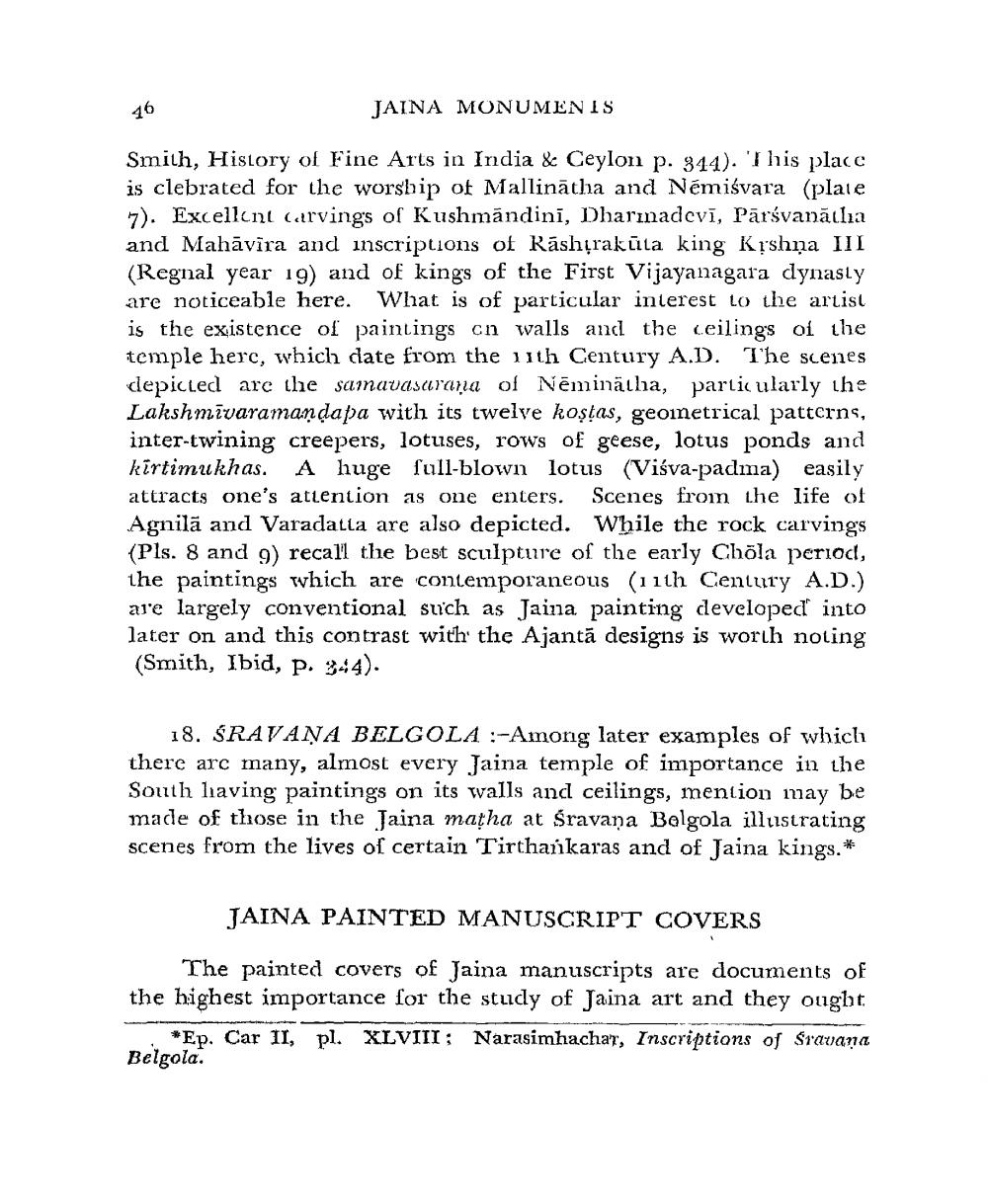________________
JAINA MONUMENIS
Smith, History of Fine Arts in India & Ceylon p. 344). This place is clebrated for the worship of Mallinatha and Némiśvara (plate 7). Excellent carvings of Kushmandini, Dharmadevi, Pārsvanatha and Mahāvīra and inscriptions of Rashtrakuta king Krshna III (Regnal year 19) and of kings of the First Vijayanagara dynasty are noticeable here. What is of particular interest to the artist is the existence of paintings on walls and the ceilings of the temple here, which date from the 11th Century A.D. The scenes depicted are the samavasarana of Nēminātha, particularly the Lakshmivaramandapa with its twelve kostas, geometrical patterns, inter-twining creepers, lotuses, rows of geese, lotus ponds and kirtimukhas. A huge full-blown lotus (Viśva-padma) easily attracts one's attention as one enters. Scenes from the life of Agnila and Varadatta are also depicted. While the rock carvings (Pls. 8 and 9) recall the best sculpture of the early Chola period, the paintings which are contemporaneous (11th Century A.D.) are largely conventional such as Jaina painting developed into later on and this contrast with the Ajanta designs is worth noting (Smith, Ibid, p. 344).
16
18. ŚRAVAŅA BELGOLA :-Among later examples of which there are many, almost every Jaina temple of importance in the South having paintings on its walls and ceilings, mention may be made of those in the Jaina maṭha at Sravana Belgola illustrating scenes from the lives of certain Tirthankaras and of Jaina kings.*
JAINA PAINTED MANUSCRIPT COVERS
The painted covers of Jaina manuscripts are documents of the highest importance for the study of Jaina art and they ought
*Ep. Car II, pl. XLVIII: Narasimhachar, Inscriptions of Sravana
Belgola.




